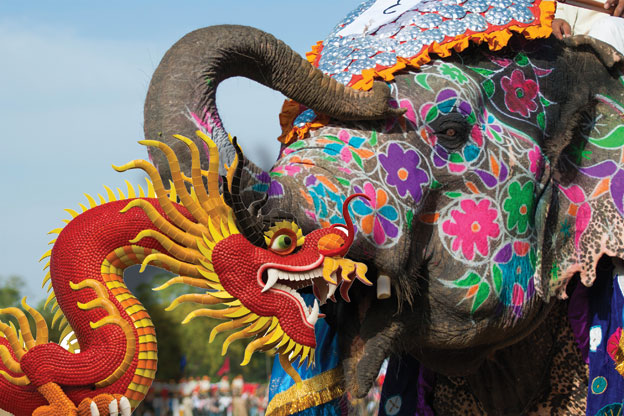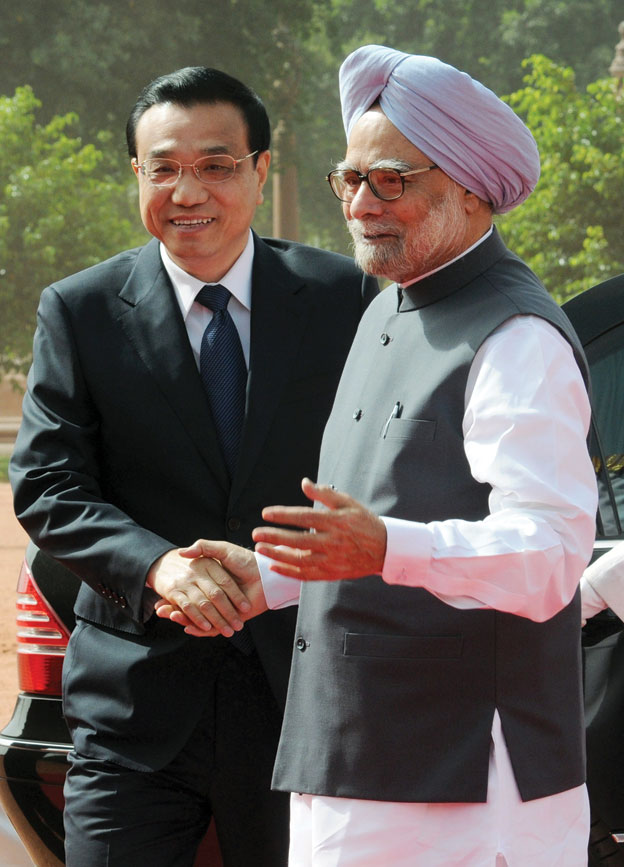SUBCONTINENT:
Aggressive Dragon, Crouching Elephant: The India-China Faceoff in Ladakh
Border rows with China have been a regular feature of India-Chinese relations ever since the two nations bitterly fought in 1962 and then clashed briefly at Nathu-La in 1967. After the more recent turn of events, experts have drawn attention to the need to assess probable implications of the price India might have paid for reworking the border disputes, writes Priyanka Bhardwaj.

On April 15, much to India’s dismay and shock and in clear violation of the 2005 protocol, Chinese troops pitched tents about 19 kilometers in Depsang Bulge in eastern Ladakh, deep into the Line of Actual Control (LAC), what is believed by India as its own territory.
Going by sources in the security establishment the standoff was long overdue as in the last four to five years India had re-launched its advanced landing grounds at Daulat Beg Oldie (DBO), Fukche and Nyoma and developed other infrastructure along the LAC besides deploying army men and bunkers at the Chumar post to patrol the motorable stretch in this strategic region.
Naturally discomforted with this entire idea, the Chinese tried hard on several occasions to immobilize surveillance cameras installed by India at the Chumar post, damaged wires, and finally took up the issue at the April 21 flag meeting of local commanders when they demanded immediate vacating of this observation post by India.
Initially Indian Prime Minister Manmohan Singh tried dismissing the incursion as an incident and a localized problem and India’s External Affairs Minister, Salman Khurshid too made light of the ingression.
But massive outrage by the public and opposition parties pushed the highest echelons of India’s political-military apparatus to resolve the imbroglio.
A deal was struck in secret by India with China, if sources are to be believed, and the Chinese pulled out only after the former promised of its own removal of military bunkers from the disputed area and agreed to reworking of border mechanism, a topic deliberately ignored by India for quite some time.
So while India’s MEA and its supporters became busy in applauding themselves for playing the diplomatic hardball by sending signals of deferment of not just Khurshid’s visit to Beijing but also of Chinese Premier Li Keqiang’s New Delhi visit on May 20, experts have drawn attention to the need to assess probable implications of the price India might have paid to retrieve the matter.
Border rows with China, without too much danger of escalation, have been a regular feature of India-Chinese relations ever since the two nations bitterly fought in 1962 and then clashed briefly at Nathu-La in 1967.
In 2002 too India had to abandon its soft approach to resolve a similar situation at Barahauti in the middle sector.
India has not always been lucky to see through quick negotiations with the Chinese as once in the past it took more than seven years to make the Chinese retreat from Sumdurong Chu in Arunachal Pradesh during the Wangdung crisis.
Right now temperatures may have quelled in both countries and but the Indian Army is raring to restart long range patrols by opening up more routes to Depsang plains which lead up to strategically-located DBO and Karakoram Pass to the north.
The strategic value of the plains is evident from the fact that in the past as well the Chinese had occupied these very plains to block access to almost 750 sq.km. area in northern Ladakh.
The army’s demand is now being supported by Ministry of Defense and National Security Advisor Shivshankar Menon who want an early decision by the Cabinet Committee on Security for a single-point command and control of the Indo-Tibetan Border Police (ITBP) under the army for better and coordinated border management along the 4,057 km. LAC with China.
ITBP’s deficiencies, lack of adequate equipment and police approach in deployment and patrolling patterns and limitations in reacting to operational contingencies have been cited as reasons for enforcing the above change in command.
But this has been vehemently opposed by the Ministry of Home Affairs that enjoys control of the ITBP, one among the seven Central Armed Police Forces (CAPF), and has found support in the Ministry of External Affairs.
The Ministry of Home Affairs contends that already 17 battalions of ITBP man the LAC along the Tibet border supported by the Army positioned in depth and which automatically gain control of former in any conflict.
Aiming to put an end to the lack of command and control flowing from absence of coordination, synergy and accountability among the forces manning the Indian borders, the Border Management Task Force and the group of ministers have been calling for reform of the national security system and promulgation of One Border-One Force principle ever since the Kargil conflict took place.
However, what cannot be overlooked in this din of debates are the Chinese intentions that are nothing but insincere toward India and indicating its aims for hegemony in Asia.
Recently at a Pentagon news conference the U.S. Deputy Assistant Secretary of Defense for East Asia, David Helvey, declared that China’s complex and bilateral military interactions, longstanding historical association with Pakistan, military modernization and potential impact on regional stability and tacit use of arms sales have to be viewed in light of its multifaceted approach to grab dividends in terms of trade, natural resources and influence in the region.
He added that starting 2012 Chinese arms exports is only likely to grow.
Hence India needs to be wary of not disregarding Chinese ingressions as moments of irrationality but put in place a comprehensive policy to secure itself from a belligerent and recalcitrant neighbor once and for all.

(Above): Indian Prime Minister Manmohan Singh meeting the Premier of the State Council of the People’s Republic of China, Li Keqiang, at the ceremonial reception, at Rashtrapati Bhavan, in New Delhi, May 20. [Photo: Press Information Bureau]
Li Keqiang’s Visit
When Chinese Premier, Li Keqiang, on his first visit ever since assuming office, arrived in New Delhi, May 20, there were valid worries that mutual suspicion arising from border tensions would overshadow bilateral relations.
Without shedding their sense of caution Li and Singh exchanged diplomatic niceties, touched areas of common concern and cooperation in trade and investment, culture, people-to-people relations remained high on the agenda and signed a major debt-for-fuel deal between China and Essar Energy Plc Ltd, a private Indian firm.
Both admitted lessons learnt from the recent stand-off in Ladakh after the Chinese incursion and resolved to take more measures to promote peace and tranquility along their borders.
Clearly Li was courting India when on being questioned on the purpose of his visit to India he said that it is three fold, “to increase mutual trust, to intensify cooperation and to face the future.”
Interestingly, as Li’s India visit winds up he and Singh are scheduled to meet each other’s respective rival: Li and his delegation are headed to Pakistan, and Singh to Japan.
|